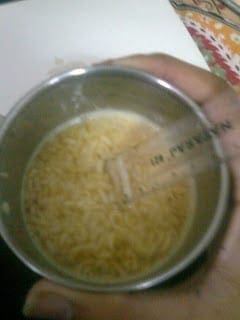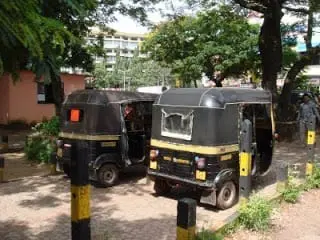
Today, at MIT, this was our first Environmental Sciences class (ENV). We, last semester had so ENVied the people who had gone for these awesome field trips to places nearby; we were more than just joyous to go for one ourselves. For one thing, I had just expected a quick introduction and ‘We’ll start next class’ this session, but it definitely was surprising – a field trip!
 |
| A Panoramic view of the Man-Made Manipal Lake |
And here’s a quick description on the same.
After a quick bus ride from MIT, we finally reached the Manip- no, I’ll stick to the original name – Mannu Palla lake, swearing at the heat but no doubt excited. Undoubtedly, the water level was low (Unimaginably extended summers, oh yes!) but still, the weather was a bit breezy all thanks to the trees around. A monsoon trip would have been better, but this wasn’t bad.
We were told of stories of this lake by a retired air force wing commander, a person with an avid interest in the preservation of this place. We were told how Mannu Palla (Mud and Water) in a local dialect Tulu was the origin of the name, Manipal.
Manipal, more than half a century ago was a barren land, two hundred metres above the sea level with about four thousand millimetres of rainfall. And resultantly and unfortunately, a lot of soil erosion. Adding to this problem was the porous ground, lots of heat and no natural springs, no continuous supply of water. And to prevent the deprivation of water to the surroundings, the Manipal Lake was made.
And with help from Manipal Civil Engineering Dept., some ecologists and also the Rotary Club of Manipal hills, this area was developed, conserved and changed into not only a reservoir for water, it is now also a place I’d (and in that case, any person) would want to go with friends, feel that breeze, stare in awe at those gallant fish eagles gliding up in the clear sky or perhaps pitch a tent and camp the night out.
More plans, as we were told included production of electrical energy using non conventional resources and the usage of the Manipal waterfall to the fullest. Ideas, as we were explained, were’t going to end. And nor was the support from people who love and admire nature.
And after spending about twenty minutes there, we walked down to the place where the water fell, to form that beautiful waterfall, something one must see during the monsoons.
And the return trip was not to be missed. In the midst of a discussion of this inspiring (and to the amusement of a class-mate, slightly diverted) trip, another class-mate recollected the story of how the term Tiger Circle was coined. Apparently, ages ago, when Manipal was home to tigers and jackals, a tiger was shot and then displayed at a place. Consequently, the place came to be known as the Tiger Circle.
On a funnier note, he also pointed out that if Tiger Circle was a place where a tiger was killed, Kamath Circle in the same sense would be…dang, I’m Aditya Kamath and this freaks me out!





Be the first to comment